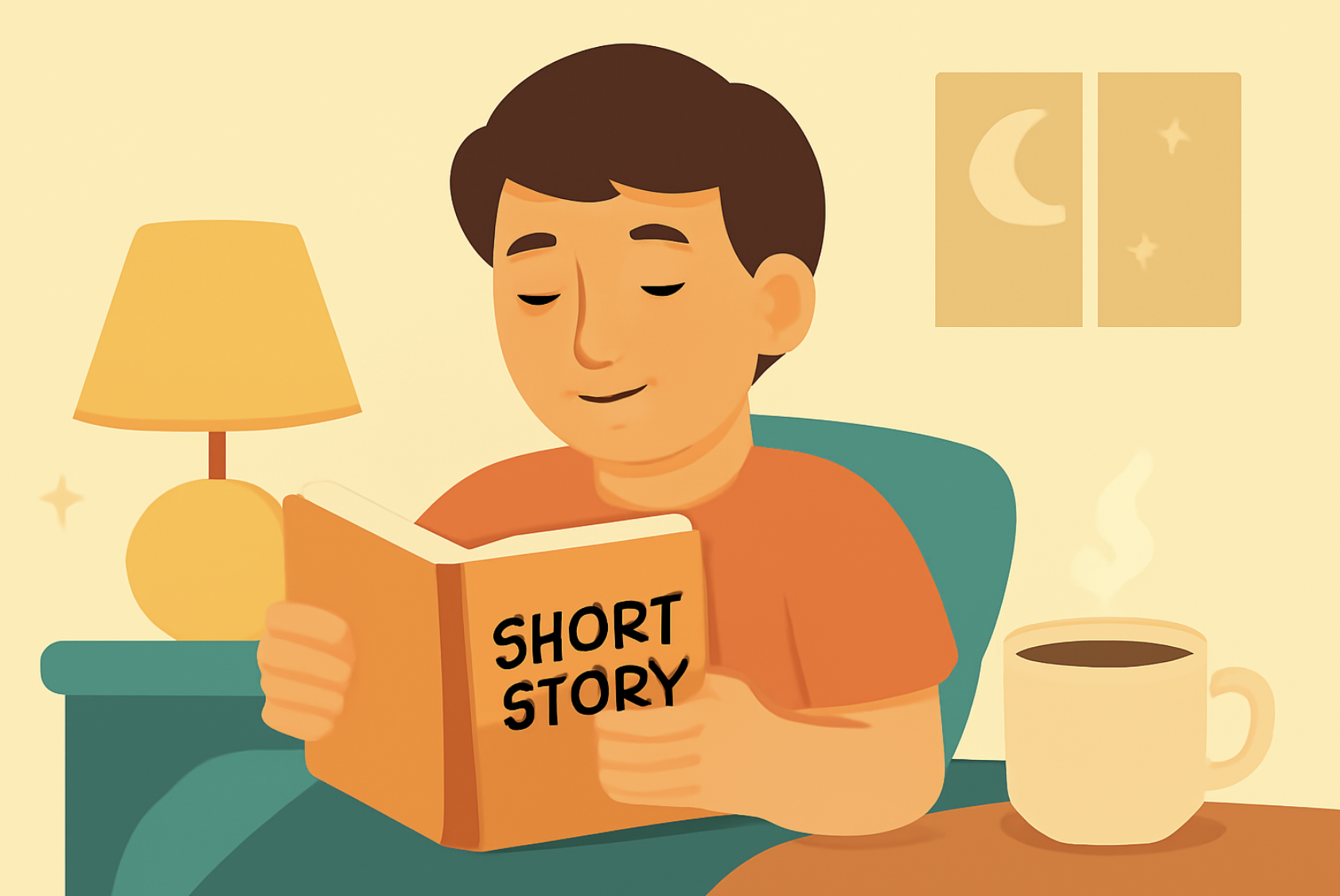In fiction writing, a well-crafted story outline is indispensable for crafting a structured and engaging narrative. It acts as a clear roadmap, enabling writers to methodically arrange plot points and character arcs, ensuring coherence and logical flow. It serves as the scaffolding for novels and short stories, guaranteeing a well-paced storyline and maintaining narrative consistency. A solid story outlining is the key difference between a mere idea and a compelling narrative, guiding writers through the complexities of plot and character interactions.
This article will explore the art of story outlining, offering techniques for structuring narratives, from plot development to character arcs. It includes practical tips, insights and examples, guiding writers in crafting outlines that enhance storytelling for novels and short stories which ultimately contributes to a narrative that is engaging and impactful, resonating with readers well beyond the last page
Understanding the Basics of Story Outlining
Story outlining is a strategic process in fiction writing where the writer sketches a structured framework of their narrative. This blueprint presents the plot’s progression, characters’ journey, and the central conflict, ensuring a coherent flow from start to finish. The primary purpose of an outline is to provide a clear path for the story, enabling the writer to envision and organize major plot points and characterization before delving into the intricacies of writing. This pre-planning not only saves time but, during the writing process, allows writers to concentrate on enhancing finer details such as dialogue, setting, and mood without worrying about the storyline.
In the writing process, the role of story outlining is pivotal. It functions as a navigational tool, preventing the narrative from drifting off course. By establishing a structured sequence of events and character developments, the outline helps maintain narrative consistency and pacing. This pre-writing exercise also empowers writers to identify and address potential plot holes and pacing issues early on, making the drafting phase more focused and efficient. In essence, outlining is not just an initial step but a continuous reference point that shapes and steers the writing journey.
Story Outlining vs Drafting
The process of outlining is distinctly different from drafting in the realm of writing. Outlining where broad concepts and ideas are organized into a structured plan, providing a comprehensive overview of the story’s trajectory. This stage is about laying the groundwork, breaking down the narrative into manageable and logical segments, and ensuring that the plot flows seamlessly from beginning to end.
On the other hand, drafting is where these plans come to life. It is the stage of elaboration, where the skeletal outline of good story is fleshed out into detailed, descriptive writing. Drafting involves delving into the finer nuances of storytelling – creating vivid scenes, crafting dialogue, and developing characters. Together, these processes work hand-in-hand to transform a writer’s ideas into a fully realized narrative.
Your Publishing Journey Awaits – Start NowPlot Points: The Backbone of Your Story
Plot points are crucial milestones in storytelling that propel the narrative forward, create tension, and develop characters. These pivotal moments include the inciting incident, which triggers the story’s main action; the climax, where tension reaches its peak; and the resolution, where conflicts are resolved and the story concludes. Each plot point serves as a cornerstone, shaping the journey the characters and the readers undertake.
In structuring a narrative, these plot points form the skeleton around which the story is fleshed out. The inciting incident sets the stage, introducing the central conflict and motivating the characters into action. Mid-story plot points, like turning points or moments of crisis, create suspense and deepen the plot, keeping the readers engaged. The climax is the emotional and narrative high point of entire novel, often presenting a make-or-break situation for the protagonist. Finally, the resolution ties up loose ends, offering closure to the story and its characters.
Story Outlining
Crafting a Detailed Story Outline
Creating a detailed story outlining involves several key steps, each designed to structure the narrative effectively. These steps can be broken down into 3 key steps:
- The first step is to establish the primary plot and subplots, defining the central conflict and major themes.
- The second step is when writers should identify and outline the major plot points – the inciting incident, climax, and resolution – which anchor the story’s structure.
- Final step is to break down the narrative into chapters or sections, detailing the events, character developments, and key moments that will occur in each.
Writers often employ various techniques to organize their thoughts and ideas. Bullet points are a straightforward and clear method to list events and character plots. Sticky notes can be particularly useful for visualizing the story structure; they allow for easy rearranging of plot points and scenes, facilitating a flexible approach to storytelling. Mind maps are another effective tool, especially for connecting themes, characters, and plot lines in a more organic and creative manner.
Balancing the big picture with detailed scenes and events is crucial in an outline. While it’s important to keep an eye on the big picture and overall narrative arc and themes, delving into specifics – such as individual scenes, dialogue snippets, and character interactions – enriches the story. This balance ensures that the outline serves as a comprehensive guide for the drafting process, providing both a broad overview and the intricate details necessary for creating a compelling and cohesive narrative.
Character Development within Your Story Outlining
Integrating characterization into your story outlining is essential for creating a narrative that resonates with readers. A well-defined character arc should be established for each key character, illustrating their evolution throughout the story. This includes mapping out how they change in response to the plot’s events, challenges they face, and interactions with other characters. These arcs are crucial for making characters relatable and dynamic, ensuring they grow and transform in meaningful ways.
Developing detailed character profiles is another integral part of the story outlining process. This involves more than just physical descriptions; it requires delving into their backgrounds, motivations, goals, fears, and personality traits. Understanding who your characters are at the beginning of the story and who they become by its end provides a framework for their decisions and reactions within the plot. It also helps in maintaining consistency in their behaviors and actions throughout the narrative.
Character development significantly influences plot progression, as characters’ actions and evolving motivations propel the story forward, often triggering key plot developments. By intertwining character growth with plot advancement in your story outlining, you craft a more immersive and compelling story. Characters become central, enriching the narrative with their journeys, potentially leading to unexpected plot twists and adding depth.
Novel Outline vs. Short Story Outlining
Outlining a novel and a short story involve distinct approaches due to their differing scopes and complexities. A novel, with its extended length, allows for more intricate plots, numerous characters, and detailed world-building. However, outlining a short story demands brevity and precision.
Story outlining a novel typically involves creating a comprehensive framework that covers various subplots, a multitude of character arcs, and a deep exploration of themes. This novel outline also must be extensive enough to manage the complexity and maintain coherence over a longer narrative arc. It often includes a detailed outline, chapter breakdowns, character timelines and a careful weaving of multiple story threads.
Outlining a short story, with a lower word count, requires a more focused approach. The story outlining should concentrate on a central idea or theme, a limited set of characters, and a singular, impactful plotline. The challenge lies in ensuring that every element makes sense and contributes directly to the story’s central theme or message, leaving no room for extraneous details.
Adapting the story outlining process to the story’s length is crucial. Understanding these differences and adapting accordingly can significantly enhance the effectiveness of the outline and, ultimately, the quality of the narrative itself.
Plotting Key Scenes and Central Ideas
Mapping out crucial scenes in a story is essential since these moments serve as the narrative’s core, propelling it onward and maintaining the audience’s interest. These scenes, frequently consisting of pivotal action or emotional high points, act as significant markers in the story’s development. They encompass instances like the inciting incident, which initiates the plot, the climax, where tensions peak, and the resolution, where the story’s conflicts find their closure.
The outline is also instrumental in developing the central idea or theme of the story. This central idea acts as the narrative’s guiding light, ensuring that all aspects of the plot and main character’ arcs align with and reinforce this core concept. For instance, in a story about redemption, each key scene should somehow reflect or explore this theme, whether through character decisions, plot developments, or symbolic elements.
Examining successful stories highlights how central ideas and key scenes interplay. In Harper Lee’s “To Kill a Mockingbird,” the central idea of racial injustice is explored through key scenes such as Tom Robinson’s trial and its verdict. These scenes are not just plot points; they reinforce the theme, challenge characters, and provoke thought in the reader. Thus, in crafting an outline, it’s crucial for writers to thoughtfully plot key scenes that not only move the story forward but also deeply entwine with and illuminate the central idea.
Your Publishing Journey Awaits – Start NowOvercoming Common Story Outlining Challenges
Addressing plot holes and inconsistencies is a crucial part of the story outlining process. These often arise when a story’s events or characters’ actions do not logically align with the established narrative. To combat this, writers should regularly review their outline, checking for any elements that disrupt the story’s continuity or believability.
Asking questions like “Does this event logically follow from the previous one?” or “Would this character realistically act in this way?” helps identify and rectify these issues. Additionally, getting feedback from trusted readers can provide fresh perspectives on potential inconsistencies.
Managing new ideas and changes is another common challenge in story outlining. As the story progresses and evolves, new and exciting ideas may emerge, necessitating adjustments to the original outline. The key is to remain flexible and open to these changes while ensuring they enhance the story. Integrating new ideas should not derail the narrative but rather enrich it. Maintaining a separate document or section for new ideas can help writers assess their viability and how they might be woven into the existing framework.
Staying focused and maintaining narrative flow are also essential. Techniques such as setting clear goals for each writing session or using visual aids like storyboards can help. Breaking the story down into smaller, manageable sections can also aid in maintaining focus. Regularly revisiting and reflecting on the outline’s main themes and goals ensures that even as the story evolves, it remains true to its core essence, maintaining a coherent and engaging narrative flow.
Tips and Techniques for Effective Story Outlining
Creating an engaging and coherent story outline is a skill honed through practice and understanding of narrative structure. One best practice is to start with a broad overview of your story, including its setting, main characters, and the central conflict. From there, break down the narrative into the beginning, middle, and end, ensuring each part contributes to the story’s progression and characterization. Follow these tips:
- Start Broad and Dive Deep: Begin your outline with a comprehensive overview that includes essential elements like the story’s setting, main characters, and central conflict. This bird’s-eye view provides a solid foundation for your narrative.
- Divide into Beginning, Middle, and End: Break down your story into three main segments: the beginning, middle, and end. Ensure that each part contributes to character development and advances the plot effectively.
- Flexibility is Key: Don’t treat your outline as a rigid framework. Many successful authors recommend story outlining as a flexible guide to writing fiction rather than a rigid framework. J.K. Rowling, for instance, used intricate outlines for her Harry Potter series, which allowed her to track character development and plot intricacies across multiple books. She advocates for outlines that accommodate changes and new ideas, highlighting the importance of adaptability in the writing process.
- Leverage Freytag’s Pyramid: Incorporate classic narrative structures like Freytag’s Pyramid, which divides a story into five parts – exposition, rising action, climax, falling action, and denouement. This framework provides clarity in plotting key events.
- Explore Visual Aids: Visual aids like mind maps and storyboards can help you visualize the flow of your story and the relationships between characters and events. These tools can be especially beneficial for those who are more visually oriented.
- Regular Revision: Keep your outline dynamic by revisiting and revising it regularly. This practice ensures that your narrative stays aligned with evolving ideas, resulting in a cohesive and captivating storyline.
- Leverage Freytag’s Pyramid: This classic narrative structure divides a story into five parts (exposition, rising action, climax, falling action, and denouement), aiding in plotting key events and facilitating character arc development, enhancing the overall story progression.
- Other useful techniques: Using visual aids like mind maps or storyboards, which can help visualize the story’s flow and relationships between characters and events. Regularly revisiting and revising the outline is also crucial, as it keeps the narrative aligned with evolving ideas and ensures a cohesive and compelling storyline.
Starting Your First Draft: Transitioning from Outline to Writing
Transitioning from an outline to writing the first draft is a pivotal phase in the storytelling process. Your outline, serves as the foundation upon which your draft is built. Begin by using the outline as a guide for structuring your story, setting the pace, and developing your characters. It is important to remember to balance adherence to the outline with creative freedom. While the outline provides direction and keeps the story on track, the drafting phase is where creativity truly flourishes. Allow yourself the flexibility to explore new ideas or take unexpected directions with your characters or plot. This can lead to more authentic and spontaneous storytelling, adding depth and richness to your narrative.
Knowing when to deviate from the outline is a skill developed over time. If you find yourself straying from your initial plan, consider whether these deviations enhance the story. Do they add more intrigue, depth, or realism? Are they in service of the characters or themes? If the answer is yes, it’s often worth exploring these new paths. Remember, an outline is not set in stone but a living document that evolves with your story. Effective story outlining is foundational in crafting compelling narratives. It involves structuring plot points, developing detailed character arcs, and balancing the overarching theme with nuanced scenes. story outlining not only provides a roadmap for your narrative but also allows room for creative exploration and growth. As you embark on your writing journey, remember that a well-crafted outline is your first step towards a resonant and engaging story. Embrace this process with enthusiasm and let your story outlining be the guide that turns your creative vision into a captivating masterpiece.
Ready to publish?
Ready to take the next step and turn your manuscript into a published book?
visit Spines.com and become a published author in less than 30 days!







